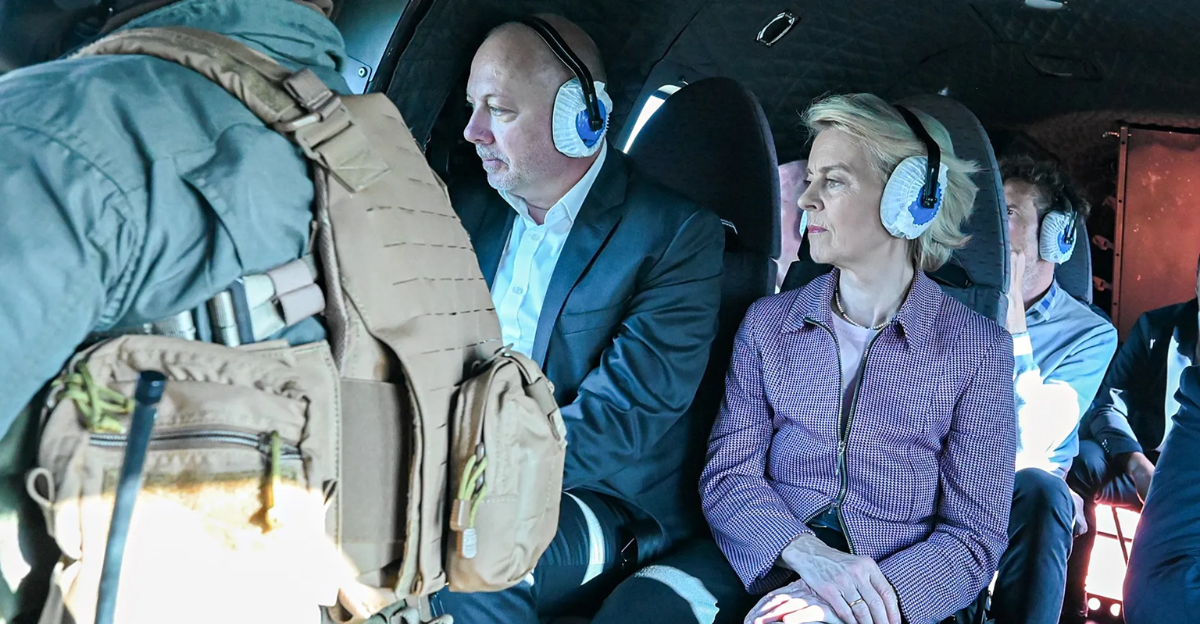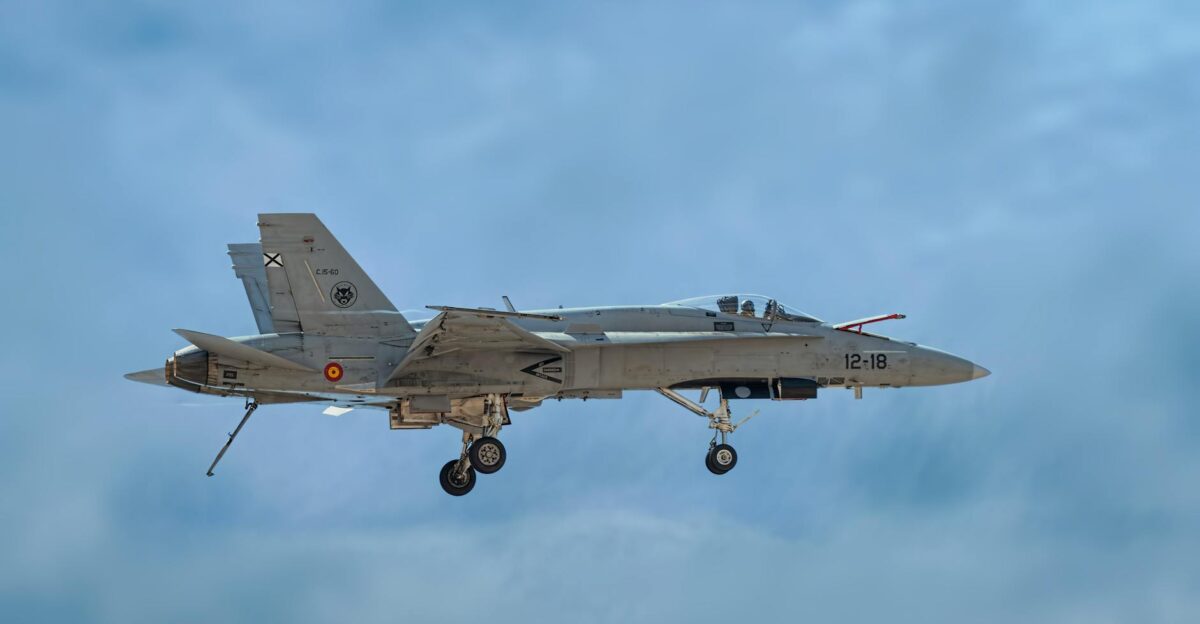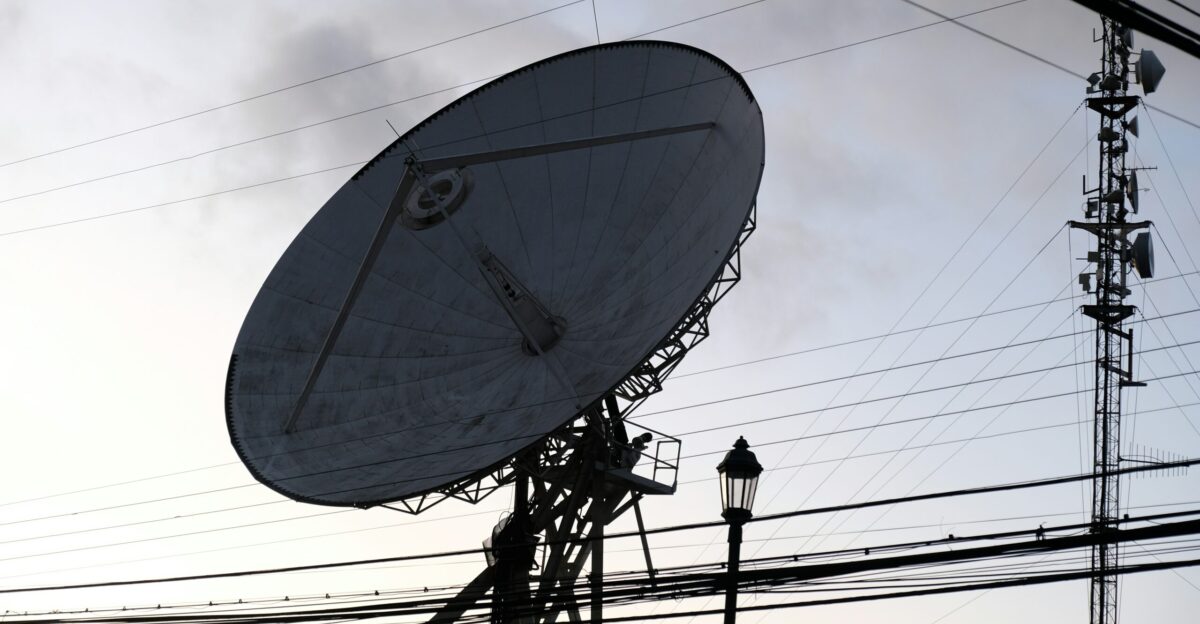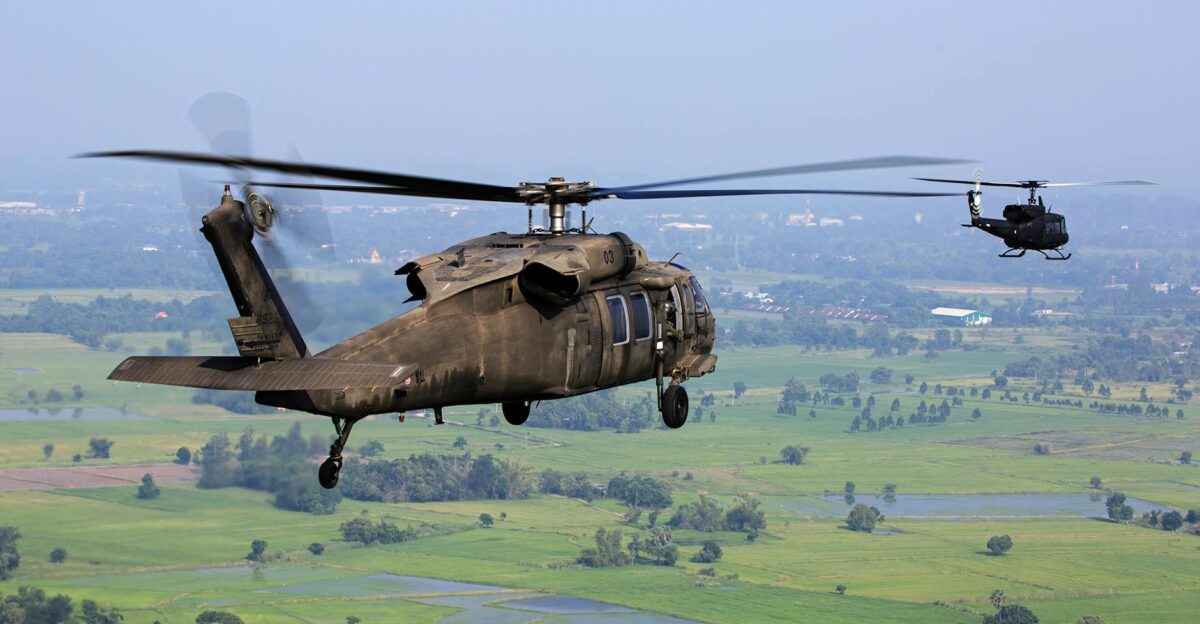
European aviation is reeling from a dramatic rise in GPS outages. IATA data show GPS signal-loss events jumped by 220% between 2021 and 2024.
In the Baltic region, these disruptions have become routine: Estonian regulators report that 85% of flights there now experience interference, and Lithuania cites a 22-fold surge in jamming incidents over the last year.
Experts warn that such signals’ losses are no longer isolated glitches but a full-blown safety crisis. “GPS has become a critical resource for modern aviation,” one industry analyst notes, “not unlike fuel or weather data”.
Escalation

The jamming campaign has shifted from nuisance to national strategy. Intelligence reports describe mobile Russian EW units near Kaliningrad and St. Petersburg targeting aviation in the Baltic Sea economic zones.
In October 2024 alone, over 29 hours of GNSS interference were logged, scrambling air traffic and forcing reroutes that significantly raise fuel burn.
Even at the civilian level, airlines complain of unexpected diversions and unpredictable airspace closures.
The harassment is relentless – a continuous stress test on NATO’s eastern front as Moscow probes how far it can push without provoking an armed response.
Pattern

This is no accident, but part of a pattern since Russia’s 2022 invasion of Ukraine. Jamming and spoofing now regularly streak across Europe’s eastern flank, hitting air, sea and land.
Pilots report losing satellite fixes near the Baltic, and mariners note ghost positions as far away as shipping lanes. Authorities say cellphone towers and even agricultural drones lose GPS guidance.
Estonia alone estimates the deliberate interference has already cost its government around €500,000in extra fuel, rerouting and safety measures.
Across the region, every ferry, tractor and delivery drone is forced to plan for “GPS-denied” scenarios.
Pressure

Western governments are sounding alarms. NATO intelligence chiefs warn Russia is “continuously testing” alliance responses by weaponizing signal bands.
The Baltic states have formally complained to international bodies; letters to the ITU and ICAO have piled up, demanding answers.
ICAO’s Council has already expressed “grave concern” and ordered Russia to stop within 30 days — failure would be a breach of international law.
The ITU similarly instructed Moscow to cease disrupting GPS. In public statements and internal meetings, officials stress that continued jamming violates norms of civil aviation and invites retaliation.
Incident

On 31 August 2025, the problem hit the headlines. Ursula von der Leyen’s Dassault Falcon 900LX was approaching Plovdiv Airport in Bulgaria when the GPS signal abruptly dropped out.
Crew radioed that their satellite navigation was scrambled; they circled on low power for nearly an hour before resorting to backup instruments and paper charts to land safely.
An EU spokesperson confirmed later: “We can indeed confirm that there was GPS jamming…we suspect…blatant interference by Russia,” he said.
Bulgarian air traffic control had observed a simultaneous GPS blackout over the region. The tone was urgent: this was no accident, they said, but a deliberate attack on a civilian flight.
Impact

The timing could not have been more pointed. President von der Leyen was on a four-day tour of EU “front-line” states — Lithuania, Finland, Estonia, Latvia, Poland, Romania and Bulgaria — intended to demonstrate solidarity amid Russian threats.
Now her own navigation failure underscored those dangers. An official quoted in FT said bluntly, “The entire GPS field over Plovdiv went dark. This was clearly electronic jamming.”.
Bulgaria’s Civil Aviation Authority confirmed the GPS signal was lost at about 3,000 feet, forcing pilots to switch to ground-based landing aidsr.
National agencies had warned for years that jamming incidents were spiking since 2022; analysts now wonder how vulnerable other capital-to-capital flights have become.
Response

After landing, von der Leyen spoke tough. In Sofia she declared, “Putin has not changed and will not change. He is a predator who can only be contained by a strong deterrent.”.
EU Communications Director Arianna Podestà added that the episode only reinforced Brussels’ “unshakable commitment to ramp up defence capabilities and support for Ukraine.”.
Berlin and Rome quickly echoed the sentiment: the EU must invest more in military-grade resilience.
On social media von der Leyen even tweeted her gratitude for the Bulgarian crews, but vowed Europe would “continue to invest in Europe’s readiness even more after this incident.”. Behind the scenes, discussions moved toward joint measures to ensure no VIP or passenger plane flies blind again.
Countermeasures

Brussels is already beefing up the tech. Defence Commissioner Andrius Kubilius confirmed plans to accelerate satellite monitoring: new Low Earth Orbit sensor constellations will detect and geolocate jammers in real time.
The EU’s Galileo navigation system is part of the answer. In July 2025, Galileo launched its new Open Service Navigation Message Authentication (OSNMA) which cryptographically signs signals worldwide.
For the first time any compatible receiver can verify that data is genuine – making spoofing exponentially harder.
And the EU is encouraging backup PNT networks: thirteen member states are investing in terrestrial alternatives like eLORAN and DME. The message: GPS should never be a single point of failure.
Scale

Industry watchdogs quantify a crisis. One analysis cites an up to 500% jump in reported interference during 2024.
The “Suwalki Gap” corridor between Poland and Lithuania has become a magnet for jammers, disrupting a strategic NATO flight path.
Airlines confirm operational chaos: special flights to Tartu, Estonia, were halted, and Finnair recently had to divert two aircraft back to Helsinki after failing to land in GPS-blacked-out Estonian airspace.
Over Eastern Europe, every flight plan now includes extra fuel and alternate routes. Even the normally complacent shipping and logistics sectors report near-misses.
Defense

Europe’s new €150 billion SAFE program (Security Action for Europe, adopted May 2025) is a direct response to such threats. It allows countries to jointly buy new defense kits, including counter-EW systems.
By pooling orders, the EU can snap up anti-jamming payloads and build local capacity. Already, a coalition of nations has earmarked part of this fund for resilient Positioning, Navigation and Timing networks; one example is re-establishing eLORAN chains on the continent.
As Polish EU Minister Adam Szłapka put it at the launch: “We have adopted the first large-scale defence investment programme… This is an unprecedented instrument which will boost our defence capabilities.”.
Dozens of anti-jam antennas and secure-signal projects are now in procurement pipelines.
Frustration

Aviation regulators admit they’ve been on the back foot. EASA’s Flight Standards director Jesper Rasmussen warned bluntly: “GNSS disruptions are evolving… We are no longer just containing GNSS interference — we must build resilience”.
The mood is urgent. Airlines and pilots are used to weather delays or bird strikes, but electronic attacks feel like a new war on normal life.
“We can’t be reactive,” Rasmussen said; industry groups are urging mandatory anti-jam capabilities on all new airliners. In practice, this means more backup procedures and rapid incident reporting, but regulators know that’s onlya stopgap.
The aviation community is pushing for a robust, unified defense akin to how they treated hijacking after 9/11.
Investment

Regional defense industries are surging. Bulgaria’s defense sector is in the spotlight after von der Leyen’s visit.
The Commission President praised Sofia’s ammunition plants and noted that about one-third of all weapons supplied to Ukraine have come from Bulgarian factories.
She announced that EU funding (via SAFE) will help underwrite two new Rheinmetall-led factories in Bulgaria – over €1 billion for shells and gunpowder, creating ~1,000 jobs.
Tallinn and Vilnius are upgrading local production too. On the NATO side, arms producers in Poland and the Czech Republic are racing to add smart anti-jam tech and new hardened receivers to their arsenals. The defense bond markets are also hot, as investors see huge demand for resilient PNT solutions.
Capability

Market analysts put Europe’s anti-jamming sector at roughly $7.5 billion by 2030. Funding comes from both military projects and urgent civil aviation contracts.
On the hardware side, airlines are looking into Controlled Reception Pattern Antennas (CRPAs) – special dish arrays that steer nulls toward interference so legitimate satellite signals survive.
Future GPS satellites (GPS III) will also broadcast encrypted “M-Code” to trusted receivers.
Currently, those signals and CRPA kits were mostly restricted to the US military, but even that is easing. Anti-jam filters and GPS authentication chips will become common in jet cockpits – at a price.
Skepticism

Even with new tech, many experts remain wary. Cutting-edge Russian EW tools keep improving. As researcher Jacek Tarocinski of Warsaw’s Centre for Eastern Studies notes, “Russia is continuously testing NATO, probing both our military and political responses,” demonstrating clever spoofing and stealth tactics.
Each time the West fields a countermeasure, some hack appears to bypass it.
Critics point out that most civilian aircraft still lack full military-grade kits, and scrambling entire satellites just isn’t scalable.
Europe will likely need a layered solution – procedural, diplomatic and technical – to stay one step ahead in the signal battlespace.
Future

The von der Leyen jamming has become a wake-up call for civilian aviation. The EU narrative now openly acknowledges what used to be whispered: in conflict-prone airspace, GPS is as essential as fuel or weather reports.
Routes that were once “safe” are now digital battlegrounds. Europe faces a hard choice: maintain open skies to Russian missiles, or impose heavy-security navigation zones.
For everyday travelers, this could mean longer routings, more diversions, and perhaps occasional GPS outages. Legislators are already debating liability.
One report warns that jamming civilian planes may even violate the Montreal Convention’s rules on unlawful interference. In any case, air safety protocols will have to reflect this invisible threat as the new normal.
Diplomatic

What was once “merely” a technical incident has escalated to the diplomatic arena. ICAO and the UN’s telecom agency have formally censed Moscow. Letters from Europe demanded that Russia stop weaponizing satellite bands.
ICAO’s Council – invoking international aviation law – warned that targeting civilian navigation could breach treaties.
Even the ITU has condemned the jamming as unacceptable under world radio regulations. The Kremlin, when challenged, claimed it was only “protecting” its borders or military exercises – a justification met with scorn.
Diplomats note that if every country starts jamming “for security,” the entire global air-traffic system would grind to a halt. Europe is now insisting that its 19th sanctions package explicitly blacklist electronic warfare equipment aimed at civilian targets.
Alliance

On NATO’s eastern flank, governments are fusing intel like never before. Air navigation agencies and air forces from Poland to Finland feed GNSS disruption data into shared networks.
radar and ADS-B ground stations are pooled to triangulate jammers in near-real time. The alliance is also developing joint rules: under what circumstances a signal attack would trigger Article 5 mutual defense.
Historically, an air-targeted jamming would be treated as an act of war by some members, but allies debate nuances if flights are technical factors.
At a minimum, the old comfort of “blue sky, free signal” no longer applies; it’s become a collective security issue.
Legal

Euro-lawyers are poring over treaties. Under the Montreal Convention and ICAO rules, intentionally jamming civilian flights is explicitly forbidden.
Victims could potentially sue for damages or compel insurers to pay under “war-risk” clauses.
In Brussels, officials say the next Russian sanctions round (likely to be announced soon) will include prohibitions on export or finance related to electronic warfare gear.
The argument goes: if you jam a civilian plane, that is as grave as bombing it.
Some diplomats even talk of bringing the issue to the International Court of Justice, though that’s largely symbolic.
Transformation

Air travel itself is changing. Pilot training now routinely covers “GPS-denied” procedures: crews practice flying approaches using only traditional radio beacons or inertial systems. Dispatchers file automatic backup routes.
The industry has rolled out mandatory GNSS loss checklists – a sign that the threat is being institutionalized.
Airlines share best practices at every conference: always keep a paper chart and an alternate in range, double-check inertial calibration, and file extra fuel. In short,
the era when pilots could take satellite navigation for granted is ending. Some experts call it the biggest operational shift in civil aviation since post-9/11 security rules.
Implications

The electronic siege of Europe’s skies underlines a harsh reality: modern war reaches into everyday life’s invisible layers.
Today a passenger jet is part of a larger battlespace, and GPS has become both a weapon and a target. As one insurer noted, fake GPS beacons have already “tricked flight management systems” into believing aircraft are miles from their actual positions.
The age of uncontested civilian navigation is over. Protecting routine air travel now demands military-grade investment in guard rails and backup systems.
Europe’s “open skies” are under assault not by bullets, but by radio waves – and that requires a strategic shift just as dramatic.